The Bartholdi Fountain, aka the Fountain of Light and Water
..and sometimes ice. It's a place to see and be seen.
From May to November 1876, Philadelphia hosted the Centennial International Exhibition, the first world’s fair held in the US. The exposition highlighted American industry and inventions, but a few foreign marvels were present too. French sculptor Frédéric Auguste Bartholdi, who had loved gigantic sculpture ever since visiting the ruins of ancient Egypt as a young man, sent a gigantic, sculpted hand holding a torch. The sculpture was meant to promote the colossal statue of Liberty Enlightening the World that he was working on for Bedloe’s Island in New York Harbor. His Statue of Liberty wouldn’t be completed for another 10 years.
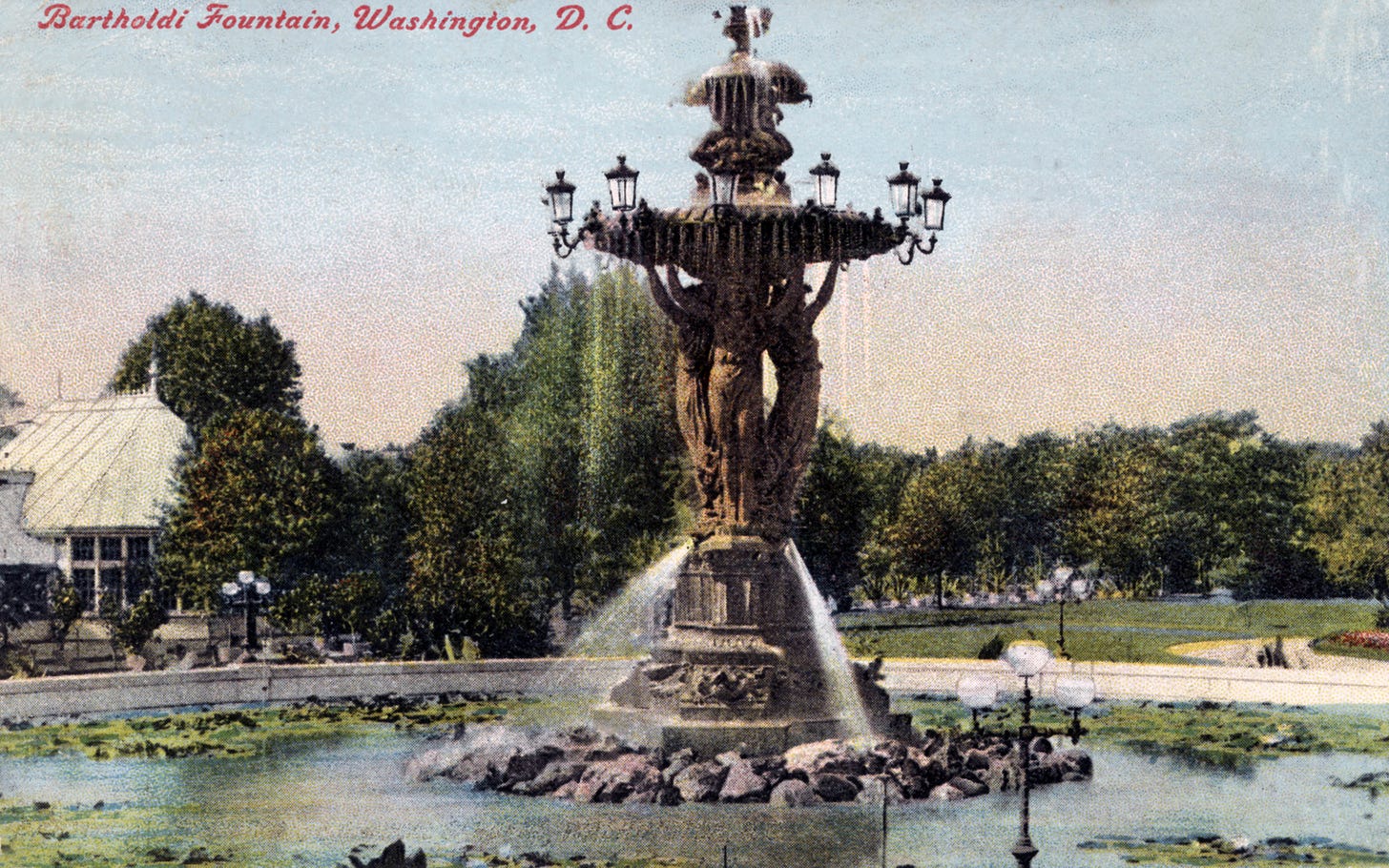
Bartholdi also sent a large ornamental fountain that was installed at a prominent intersection on the exposition grounds. According to a reporter for the Washington Daily Critic, the fountain “has been much admired and attracts great attention. It plays beautifully and the design, composed of three graces bearing on their shoulders a huge basin, with cupids and jet for gas, is very appropriate…”1
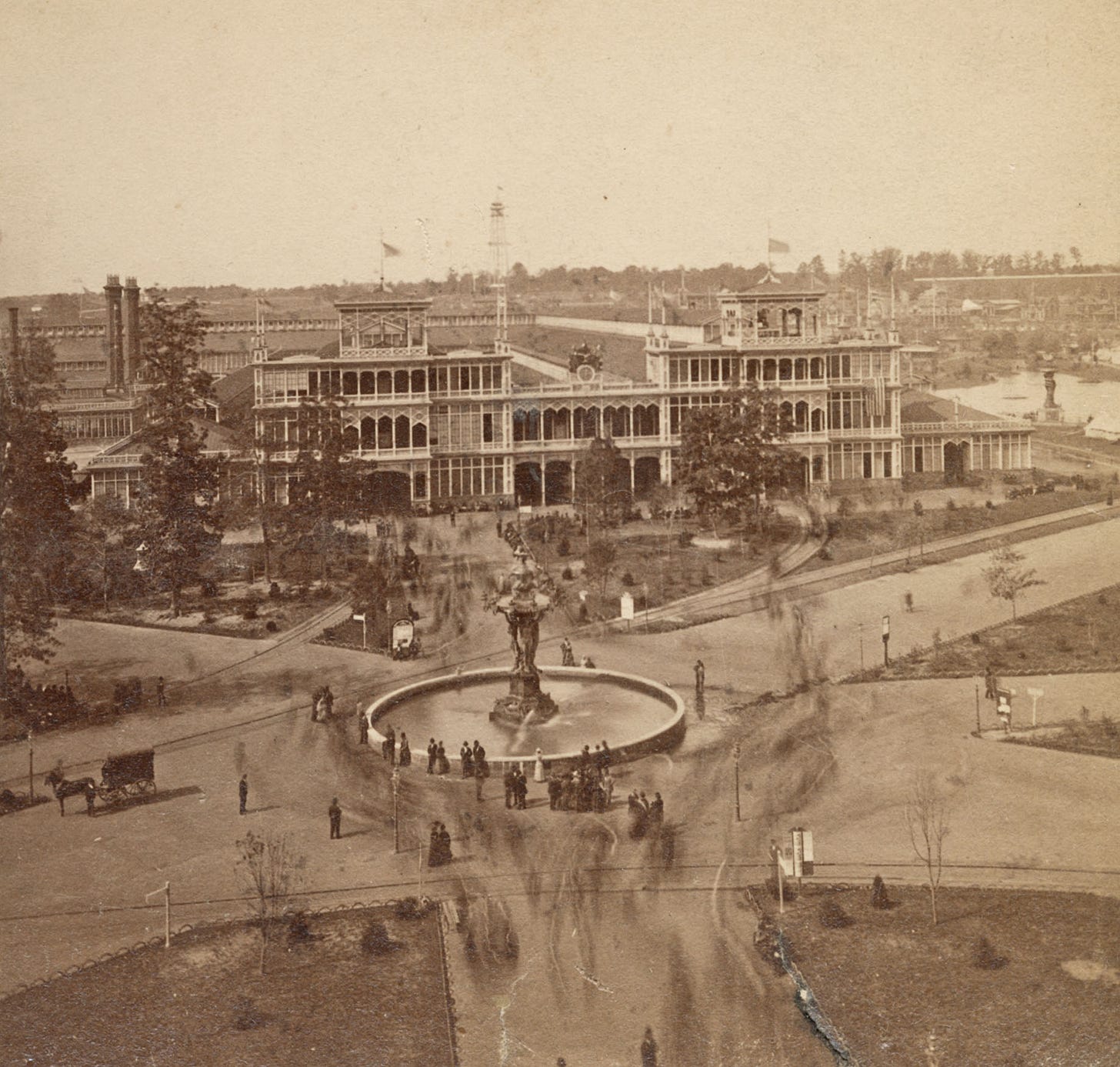
It turned out the fountain was for sale—with an asking price of $25,000. That was a bit unrealistic. Maybe $10,000? In the end, after the exposition was over, the US government paid $6,000 for it. Landscape architect Frederick Law Olmsted, Sr., had urged Architect of the Capitol Edward Clark to purchase it as a centerpiece of the U.S. Botanic Garden, located at the far eastern end of the Mall in Washington. Olmsted thought the final, discounted $6,000 price was a bargain because the fountain’s bronze alone would be worth more than that. Needless to say, there was much disappointment when the fountain was erected on the Mall in late 1877 and officials discovered that it was merely cast-iron with a bronze coat of paint.2
The fountain was installed in a large stone basin in front of the Botanic Garden’s conservatory. Lots of people thought this was a poor location—too out-of-the-way. One reader wrote to the Evening Star, “It is possible that a more inappropriate location might be found, but it is doubtful… I am astonished that any one making any pretense to even good common sense…should have thought of putting it there.” Better to set it up directly in the middle of Pennsylvania Avenue, at 7th Street NW, opposite the Center Market. Everyone would see it there, this reader believed.3 Others wanted it moved to the White House lawn or placed on one of the city’s circles, like Dupont Circle. —But the fountain stayed where it was.
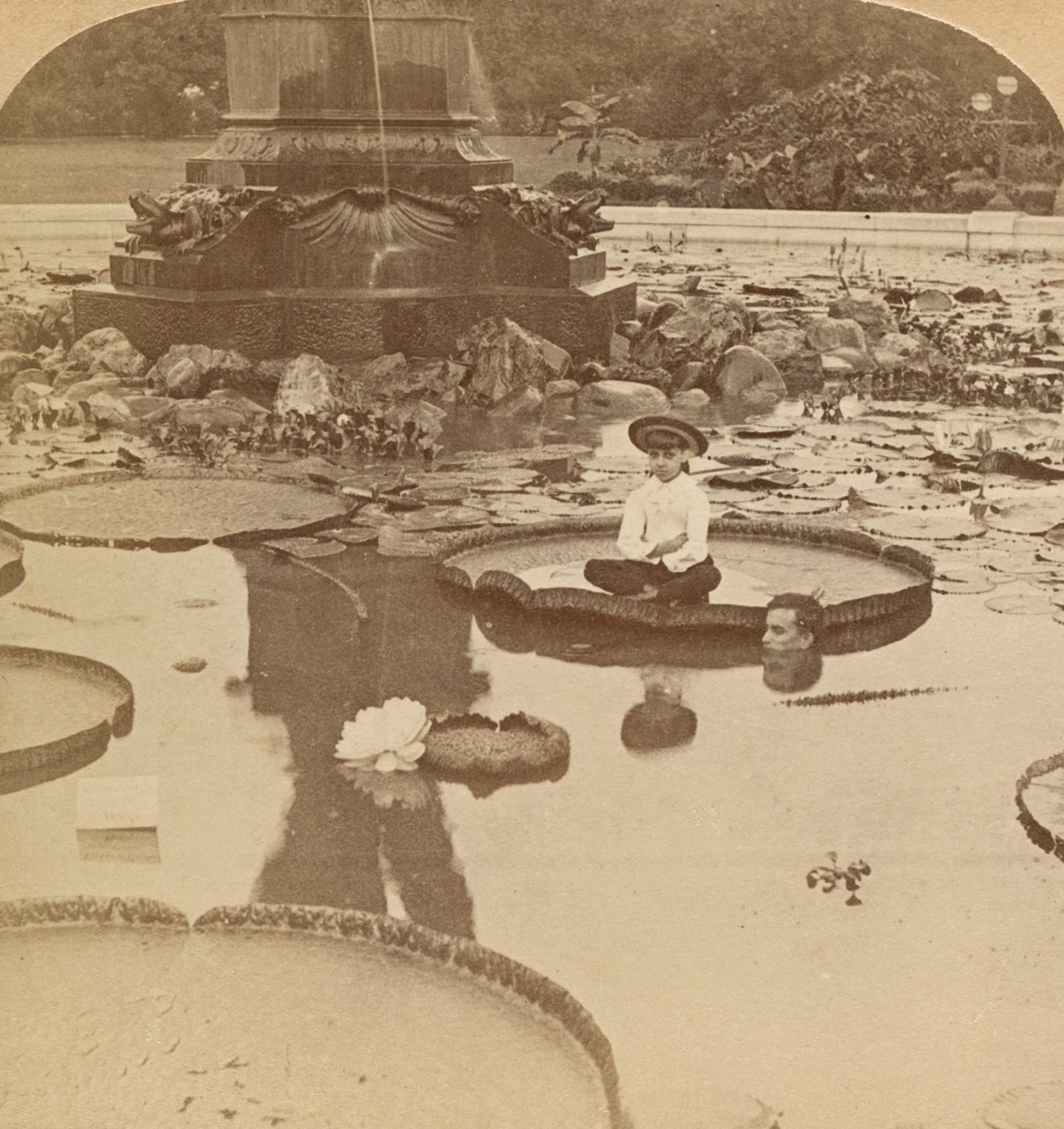
Despite being made of lowly cast-iron and consigned to a supposedly unfavorable location, the fountain was a major tourist attraction in the late 19th century. Lit up at night by the 12 gaslight fixtures surrounding its bowl, it was one of the earliest illuminated monuments in the city.4 People found the improbable combination of light and water mesmerizing.
The fountain, with the Capitol behind it, became a favorite spot for tourists to have their pictures taken.
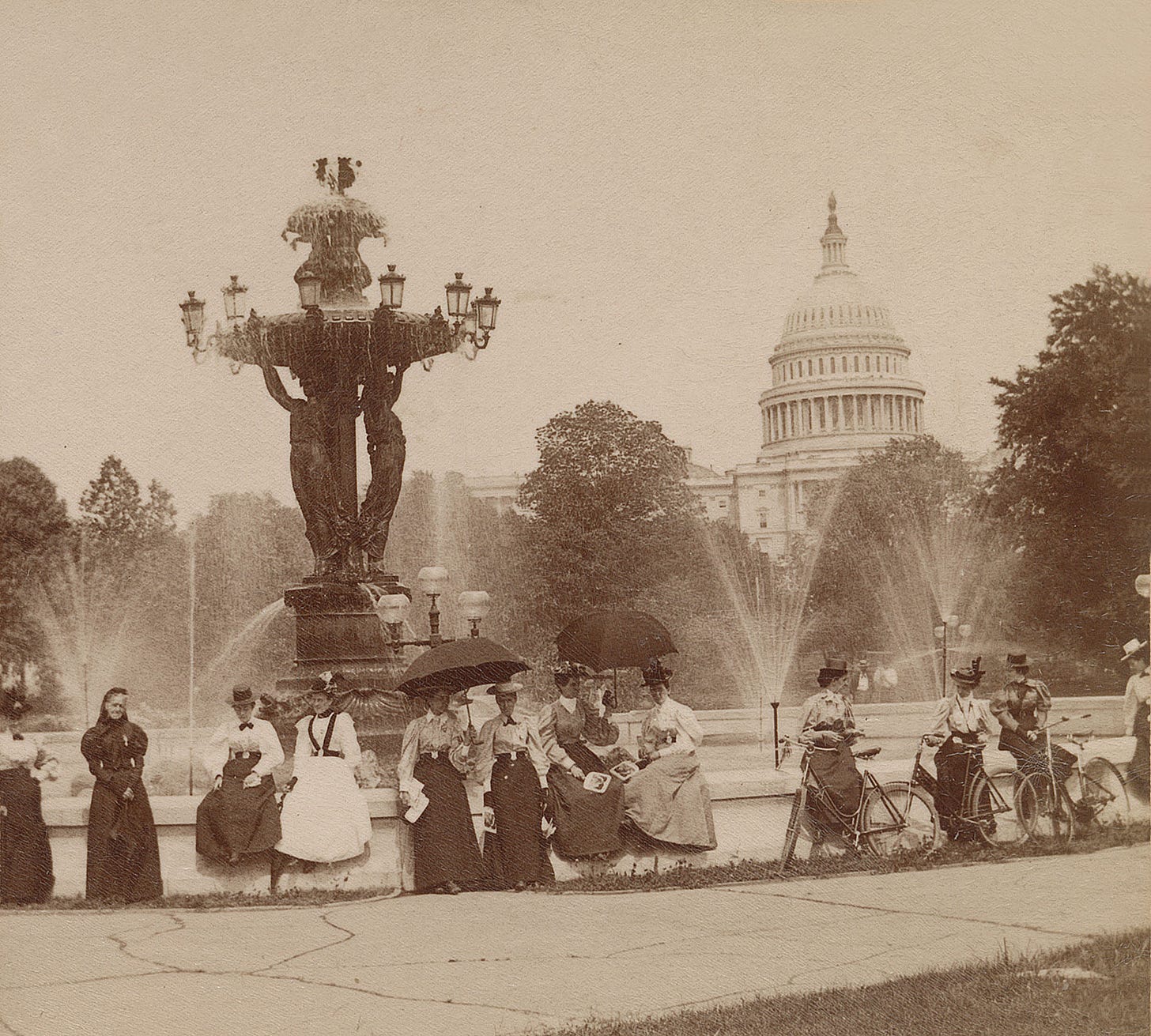
Public fountains generally require extensive maintenance; water is a powerfully corrosive force. And the Bartholdi Fountain required maintenance not just on its waterworks but the gas-powered lighting system as well. At least once, the fountain was left running as freezing temperatures swept in, resulting in a fantastic display of ice magic. A photograph of the frozen-over fountain appeared many times on postcards and stereoviews. One wonders how badly the fountain was damaged when this occurred around 1901.
In 1915, as part of a restoration project, electric lights in round white globes replaced the original clear gas fixtures, which were based on Paris streetlights. Apparently the fountain’s old gaslights had not been working for a long time—an article in the Post implies that the fountain was to be lit up at night for the first time with the new electric lights.5
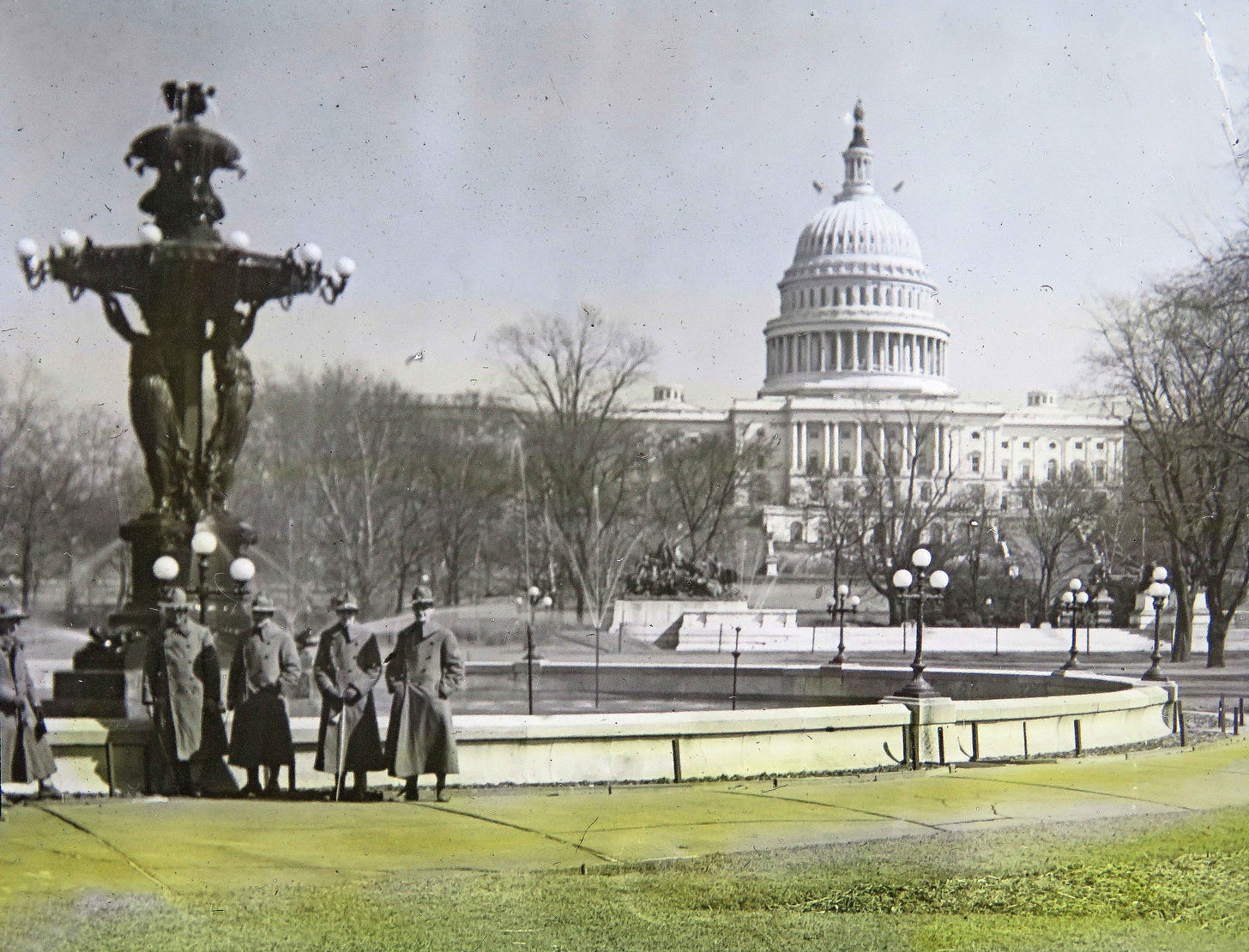
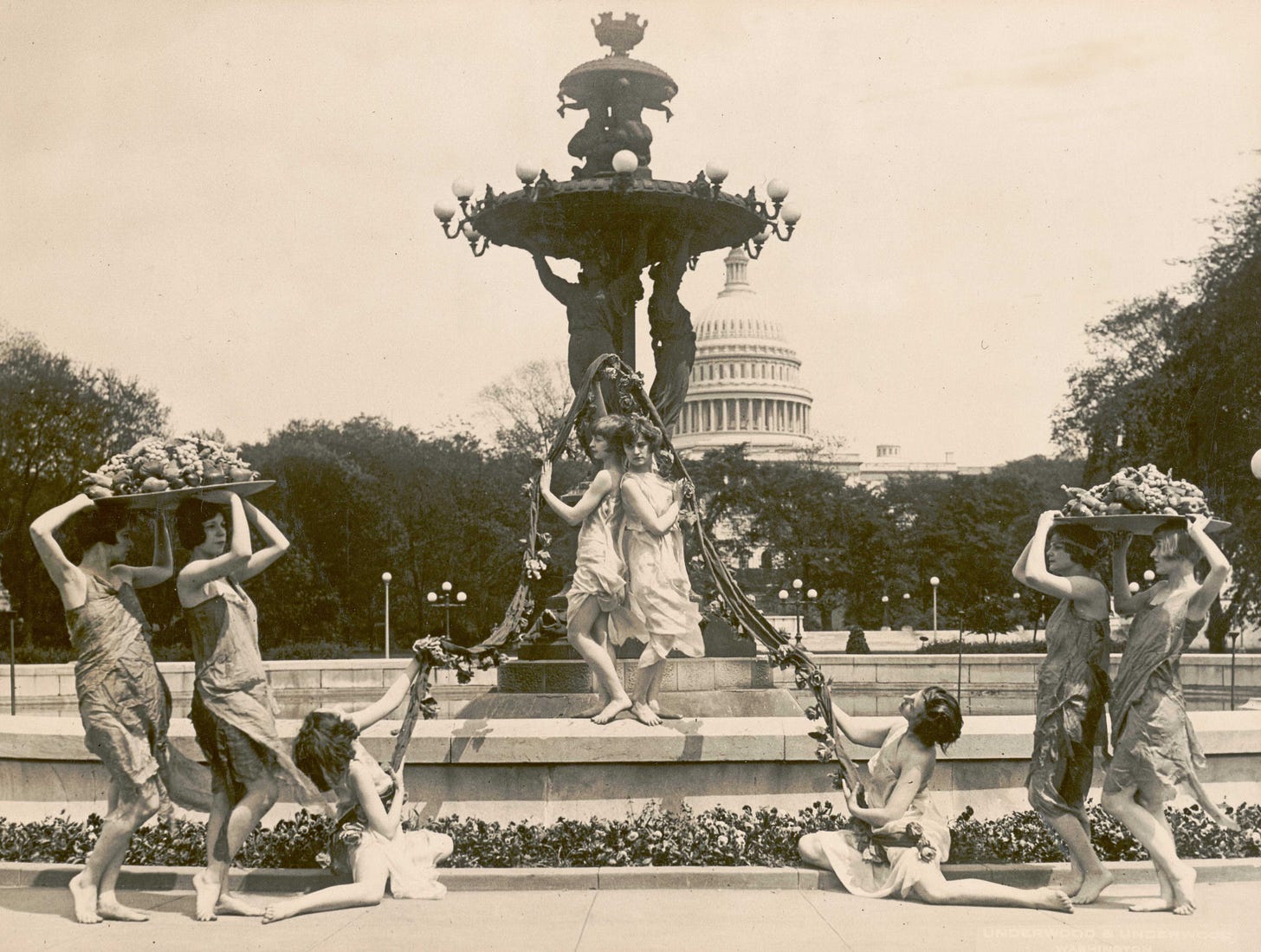
In 1927, the fountain was dismantled and placed in storage while the east end of the Mall was reconfigured to accommodate the Plaza of the Union, a vast sculptural ensemble honoring General Ulysses S. Grant and the Union Army. As part of this effort, the Botanic Garden was moved to its current spot just south of the Mall. The Capitol Reflecting Pool, completed in 1971, now covers the spot where the Bartholdi Fountain once stood.
In 1932, the fountain was reinstalled in a small triangular patch of land, now called Bartholdi Park, across Independence Avenue from the Botanic Garden. It has remained there more-or-less continuously ever since. In 2008, the fountain was temporarily removed for extensive restoration work. When it was rebuilt and reinstalled in 2011, it sported new electric light fixtures deigned to replicate the original gas fixtures that had been removed in 1915.6
“Philadelphia Letter,” Washington Daily Critic, Sep. 1, 1876.
“Telegraphic News from Washington,” Baltimore Sun, Sep. 22, 1877, 1; “The Bartholdi Statue,” Washington Post, Mar. 27, 1883, 1; Lisa Dale Jones, “Water and Light—Bartholdi Fountain Restored” in Capitol Hill Restoration Society News, Oct. 2011, 8; Peter R. Penczer, The Washington National Mall (Oneonta Press, 2007), 59.
“The New Fountain—Change It,” Evening Star, Sep. 18, 1877.
James M. Goode, Washington Sculpture, (Johns Hopkins University Press, 2008), 565; Thomas E. Luebke, ed., Civic Art: A Centennial History of the U.S. Commission of Fine Arts (2013), 10; Anne-Catherine Fallen, A Botanic Garden for the Nation, (US Government Printing Office, 2007), 62.
“Bartholdi Fountain Lighted,” Washington Post, Jul. 14, 1915, 4.
Jones, op. cit.



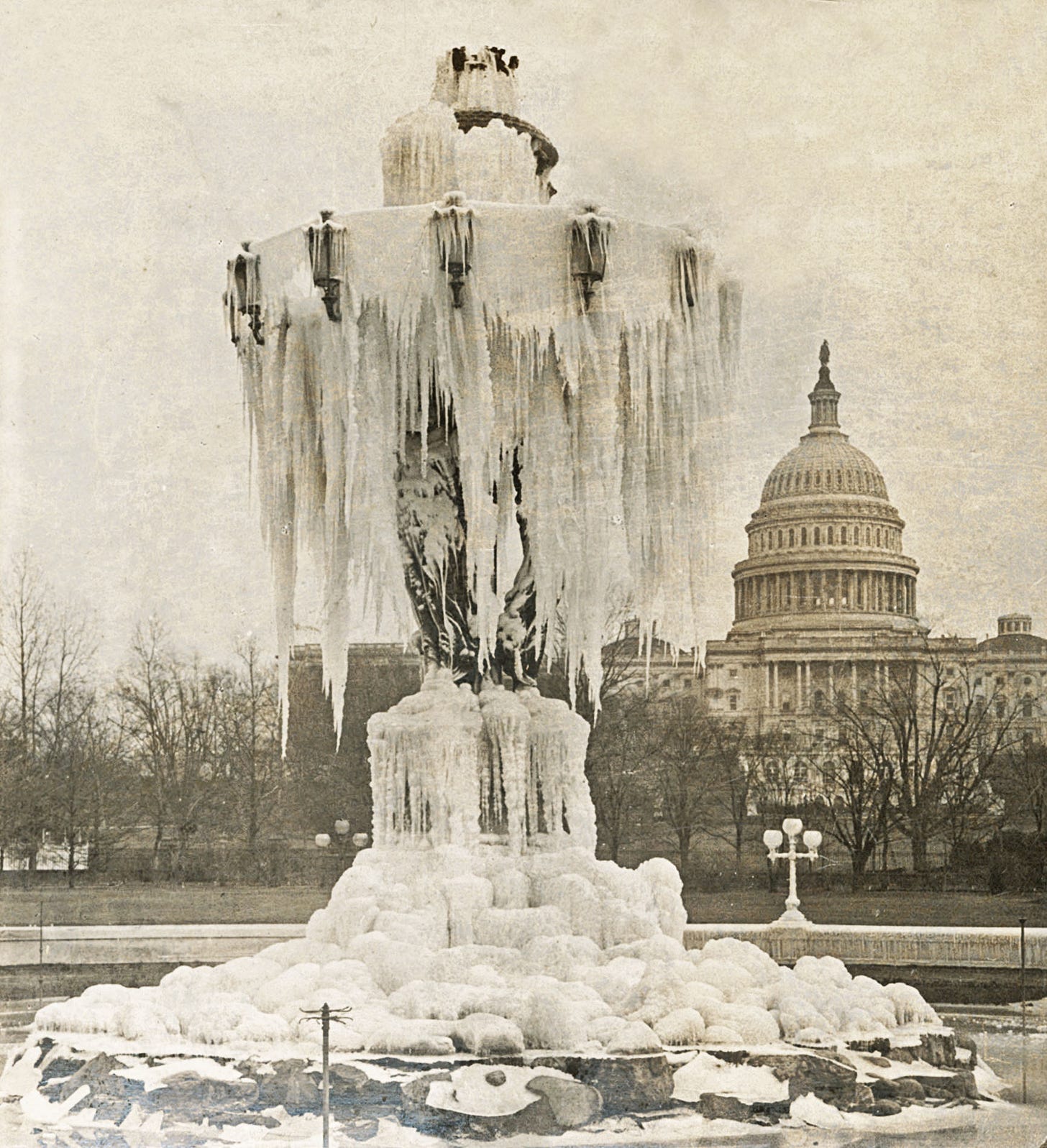
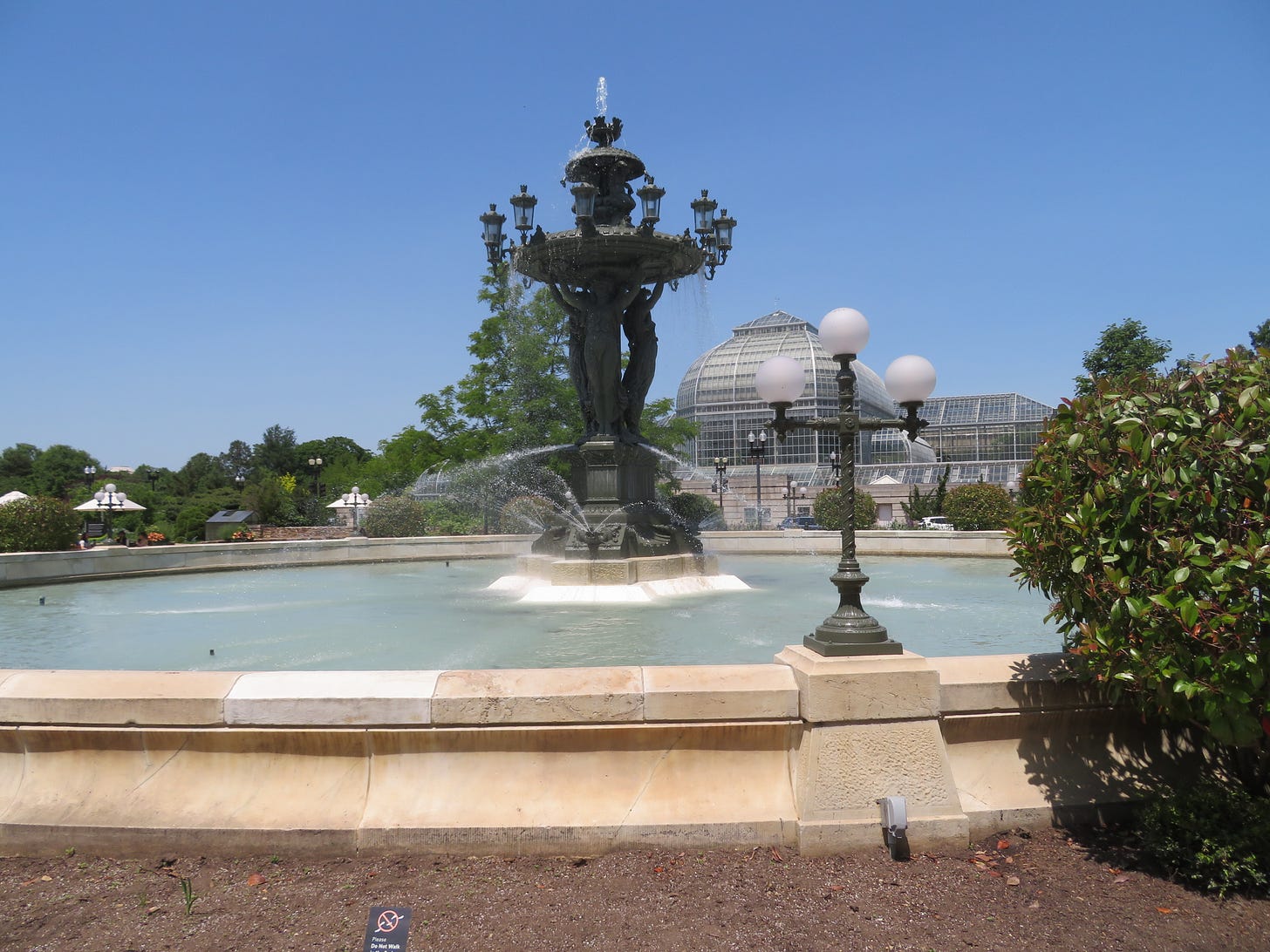
Can't wait to visit the Bartholdi Fountain again. The history of the fountain is a quiet epic. We live in a wonderful area. The Temperance Fountain is another hidden in plain sight favorite.
another great article about DC’s history. Kudos